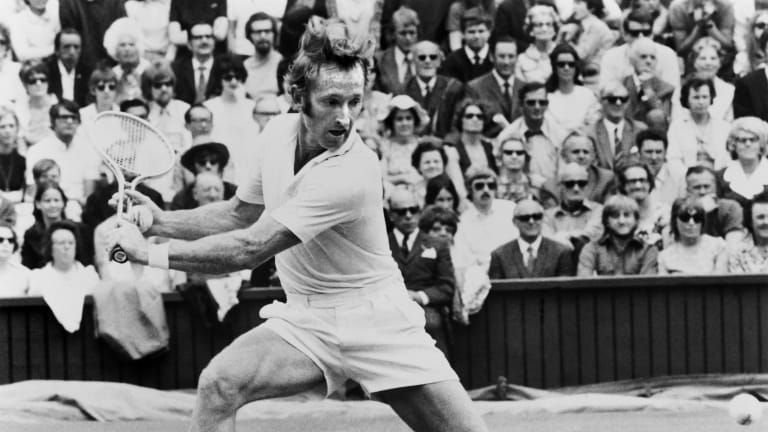On This Day: Wimbledon moves towards Open Tennis in 1967
By Oct 05, 2021Laver Cup
The competition and camaraderie of Laver Cup set to unfold with new chapter in Berlin
By Sep 16, 2024Social
Rod Laver tips Ben Shelton for Grand Slam success in Laver Cup Q&A
By Sep 24, 2023Laver Cup
Rod Laver turns 85 with the tours in Canada, and his namesake event heading there soon
By Aug 09, 2023Special Feature
The Greatest One-Handed Backhands of the Open Era, Nos. 10-7: Ashe, Edberg, Suarez Navarro, Laver
By Mar 10, 2023Tennis Honors: Roger Federer
Alcaraz, Swiatek among tennis stars tweeting tributes during Roger Federer’s last match
By Sep 24, 2022Top 5
Top 5: Iconic Laver Cup Moments featuring Roger Federer, Rafael Nadal
By Sep 21, 2022#CentreCourtCentennial
1967: With the Wimbledon Pro event, professional tennis finally comes to the amateur game’s most hallowed lawn
By Jun 17, 2022Wimbledon
How Novak Djokovic compares to the two men holding a calendar Grand Slam
By Jul 11, 2021Wimbledon
A rich tradition renewed: Ash Barty joins gallery of Australian greats to win Wimbledon
By Jul 10, 2021On This Day: Wimbledon moves towards Open Tennis in 1967
Led by All England Club chairman Herman David, SW19 votes to host the game's best in a precursor to the Open Era.
Published Oct 05, 2021
Advertising
Advertising

Rod Laver's decision to turn pro after 1962 precluded him from playing Wimbledon, then an amateur event, for five years.
© AFP via Getty Images